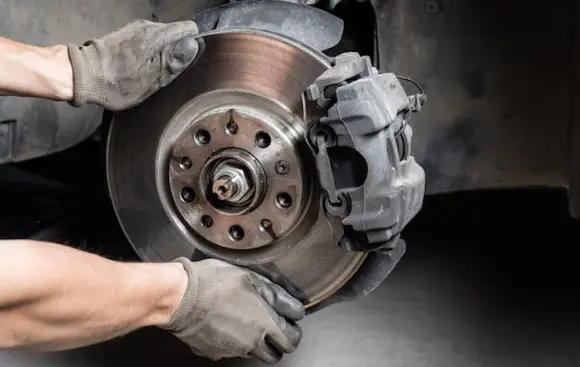Welcome, fellow Volkswagen enthusiasts and owners! In this blog post, we embark on an exciting journey to delve into the fascinating world of Volkswagen brake pad repair. Whether you’re a DIY enthusiast or simply curious about the process, we’ve got you covered. So grab a cup of your favorite beverage, sit back, and let’s explore the ins and outs of maintaining your Volkswagen’s braking system.
- Understanding the Importance of Brake Pads Brake pads are an integral part of your Volkswagen’s braking system, ensuring efficient and reliable stopping power. These small but mighty components work in harmony with the rotors to provide optimal friction and bring your vehicle to a safe halt. Regular maintenance and timely replacement of brake pads are crucial to guarantee a smooth and responsive braking experience.
- Identifying the Signs of Worn Brake Pads How can you tell when your Volkswagen’s brake pads need replacing? Keep an ear out for squealing or grinding noises while braking. Additionally, pay attention to a pulsating brake pedal, decreased responsiveness, or an illuminated brake warning light on your dashboard. If you notice any of these signs, it’s time to give your brake pads some well-deserved attention.
- Choosing the Right Brake Pads for Your Volkswagen When it comes to selecting brake pads, it’s essential to consider factors such as driving style, vehicle model, and the type of braking performance you desire. Volkswagen offers a range of brake pad options, including standard, performance, and ceramic pads, each with its own benefits and considerations. Consult your owner’s manual or reach out to a trusted mechanic to determine the best fit for your specific Volkswagen model.
- The DIY Approach: Steps to Replace Your Volkswagen’s Brake Pads If you’re up for the challenge, replacing your Volkswagen’s brake pads can be a rewarding DIY project. Here’s a step-by-step guide to get you started: a. Gather the necessary tools and equipment. b. Safely lift and secure your vehicle. c. Remove the wheel and access the brake caliper. d. Unbolt the caliper and carefully remove the old brake pads. e. Install the new pads, ensuring proper alignment. f. Reassemble the caliper, wheel, and perform a thorough brake system inspection.
Remember, if you’re not comfortable performing this task yourself, it’s always wise to seek professional assistance to ensure your safety and the proper functioning of your brakes.
- Fun Brake Pad Facts and Maintenance Tips Let’s lighten the mood with some interesting brake pad trivia:
- Did you know that brake pads can generate temperatures of up to 900°F (482°C) during heavy braking?
- Regularly inspecting your brake pads and cleaning any accumulated dust or debris can help prolong their lifespan.
- Applying a thin layer of high-temperature brake grease to the back of the pads can reduce noise and vibration.
Maintaining and replacing your Volkswagen’s brake pads is an essential aspect of responsible vehicle ownership. By understanding the significance of these components and following the necessary maintenance procedures, you can ensure a safe and enjoyable driving experience. Whether you choose to tackle the task yourself or seek professional assistance, the key is to prioritize your safety and the reliability of your Volkswagen’s braking system.
Remember, with well-maintained brake pads, you’ll be ready to hit the road for endless adventures, confidently navigating every twist and turn that comes your way. Happy driving!
